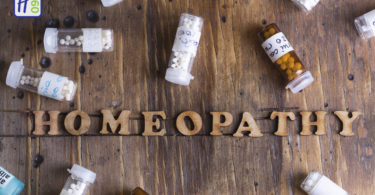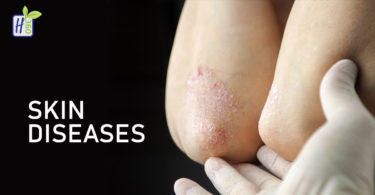It is a post-streptococcal allergic fever, characterized by fleeting polyarthritis, and a great tendency to carditis. The streptococci belong to group A, b-hemolytic streptococci.
Aetiology
Age: common in lower age group (5-15 yrs.).
Sex: commonly seen in females.
Season and climate: mostly in winter and in temperate climates.
Heredity: may run in families.
Social environment: affects poor class living in unhygienic conditions.
Upper respiratory infection: usually preceded by upper respiratory infections, commonly tonsillitis, pharyngitis etc.
Pathology
There are two types of reactions – exudative and proliferative.
*Exudative reaction comprises of edema, congestion, and leucocyte infiltration of the collagens.
*The proliferative reaction is formation of Aschoff’s nodules which consists of central necrotic mass undergoing fibrinoid changes, around which there are few histiocytes, giant cells (Aschoff cells), and lymphocytic infiltration. The most important aspect of the rheumatic pathology is pancarditis i.e. endocarditis, myocarditis, and pericarditis.
Symptoms
- Onset is usually sudden, maybe insidious also.
- Fever: Usually low, maybe high but continued, not associated with chills or rigor.
- Joint swelling: There is migrating arthritis involving especially big joints— first-knee, ankles, wrists, elbow, shoulders, hips in this order. The joints become swollen, hot, painful, and tender restricting all movements. The swelling is due to periarticular effusion.
- Joint involvement is more marked in adults than in children.
- Sweating: It is usually moderate sometimes acrid and offensive.
- Constitutional symptoms: Anorexia, constipation, weakness etc. are also present.
Signs
- Patient is usually a girl of the age 5 to 15 yrs.
- Temperature raised, face flushed, and dry tongue.
- Pulse: Out of proportion to the temp. during sleep.
- The tonsils may be enlarged or infected.
- Child assumes posture which does not allow the joints to be hurt.
Skin changes
- Rheumatic nodules: They are non-tender small nodules found over bony prominences or around affected joints. Pathologically they are aggregations of Aschoff’s nodules.
- Erythema nodosum: Tender nodules chiefly present over shin bone.
- Erythema marginatum: These are reddish patches seen over the trunk, margins of which are elevated and irregular. Some coalesce and form big patches.
- Subcutaneous nodules.
Heart changes
- Apex beat may be shifted out.
- Heart rate increased.
- First heart sound is accentuated but soft.
- A soft systolic murmur (Carey coomb’s murmur) due to mitral valvulitis.
- Signs of congestive heart failure may be seen.
- Sometimes pericardial friction may be heard due to associated pericarditis.
- Cardiomyopathy.
Chorea
It is due to the involvement of basal ganglia (Caudate nucleus) and mild encephalitis (Sydenham’s chorea).
Investigations
- Polymorphonuclear leucocytosis.
- Anaemia may be mild.
- ESR is always raised.
- A rising titre of ASO is always seen.
- Urine: May show albuminuria.
- ECG: Prolonged P-R interval seen in active rheumatic carditis.
- Elevation of the S-T segment and flattened T wave are seen in the early stages of pericarditis.
Differential diagnosis
- Osteomyelitis: H/O trauma, actually joint is not involved, absent cardiac signs, X-ray helps in diagnosis.
- Acute suppurative arthritis: Single joint involvement, marked systemic toxaemia sign of acute inflammation present. No cardiac signs.
- Still’s disease: Joint involvement, not migrating, no sign of acute involvement, no cardiac sign. Lymphadenopathy and splenomegaly present. Rheumatoid factor test is positive.
- Traumatic arthropathy: H/O of trauma.
- Haemophilic joint and Henoch Schonlein purpura: Evidence of haemorrhagic manifestations, absent cardiac signs and presence of urticaria, and angioneurotic oedema.
- SLE: Diagnosed by the presence of L.E. cells.
- Sub-acute bacterial endocarditis: Clubbing, splenomegaly, presence of RBC in urine, positive blood culture all contribute to the diagnosis.
- Gonococcal arthritis: H/O Gonorrhoea, presence of gleet in chronic cases, nightly increase in pain, absence of cardiac signs. Rheumatoid factor test positive, presence of rheumatic nodules.
Complications
- Congestive heart failure.
- Rheumatic heart disease.
- Arrhythmias.
- Pericarditis.
- Pneumonitis.
Treatment
- Rest
- Local care of joint involved: wool bandage with a light splint.
- Diet: milk, bread, etc., nourishing as well as easily digestible diet during the febrile period.
Homoeopathic medicines
Aconite: Fever marked with restlessness and mental anxiety. Pain in joints with marked thrist.
Aurum iod.: Chronic pericarditis. Valvular disease.
Bryonia: Much pain in joints by least motion. Stiffness, better lying on painful side.
Mer. v.: Pain in joints with swelling at night, profuse sweating which does not relieve; sweat offensive and oily, with pericardial complications.
Nat. salicylicum: Rheumatism of joints starting from below upwards (Ledum), great fear of being touched or approached. Pain in affected joints as if beaten, sore bruised. Everything on which he lies seems too hard.
Rham cal.: Rheumatic arthritis; joints swollen; painful with tendency of metastasis; profuse sweating. Rheumatic heart (5 to 10 drops every four hours).
Rhus tox.: Marked physical restlessness. Pains better by moving about. Pains tearing in tendon, ligaments, and fasciae. Morning stiffness of limbs.
Sali. acid: Knees swollen and painful. Acute rheumatism; < touch and movement. Profuse sweating.
Stell. med.: Shifting rheumatic pains in all parts with soreness. Worse by least motion, stiffness of joints; parts sore to touch, worse motion. (Ext. Q locally on affected joints).
Sulphur: After Acon., when the pains are <at night, <by warmth, sinking sensation at 11 a.m. Rheumatic pain in left shoulder, burning of palms and soles. Rheumatism associated with itching.
Reference: Textbook of Practice of Medicine with Homoeopathic Therapeutics by Kamal Kansal & Rakesh Kaushal





